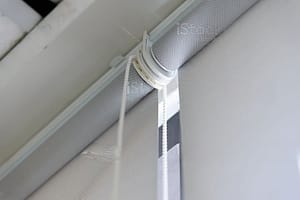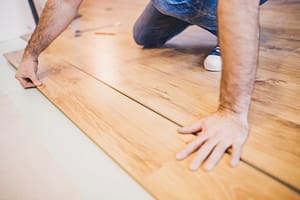
Electrical safety is a crucial component of education that can’t be overlooked. Every home and workplace needs to observe proper basic safety standards, using logic taught as a child to ensure that there is a little chance of an accident.
Kids must learn how to stay safe around electricity before they start encountering power cords, outlets, and all types of connectors on their own.
We’ll be taking you through a look at how to start educating your kids on electrical safety so that they grow into responsible adults, while never suffering the unnecessary risk of electrocution.
How Electricity Is Conducted
The copper wire conducting power in your home contains atoms with a nucleus at the center. This nucleus is made up of positively charged protons and neutral neutrons that don’t yet hold a charge.
Positively charged protons hold electrons that supply the foundation for their energy, swarming around the nucleus. Attracted to each other but unable to touch, the protons and electrons together make the copper atom.
A copper atom has 29 electrons orbiting around its central nucleus, and it takes many millions of copper atoms to make the shortest length of wire.
As electricity flows from an outlet through a power cord or other electrical cable, there is a stream of electrons that jumps from atom to atom as the current moves.
Insulation
The reason that we don’t get an electric shock when touching a switched-on the power cord is because of the copper wire’s insulation. Insulators prevent wandering electrons from forming a circuit with your body, thus causing a shock.
If there were no insulator or there’s a break in insulation, the stream of jumping electrons would connect to your body. Good insulators include plastic, rubber, glass, and ceramics.
Our Body & Electricity
Our total body composition consists of 60% to 65% water. The water in our body contains salt and other minerals, which makes it a carrier for charged positive and negative ions. Once current enters the body, our body supplies a resistance-free conduit from the current to flow.
The only real resistance is our skin, but more on this soon. One can see the body as nothing more than a conductive electrolyte solution, which is not necessarily the best conductor around, but it is one that’s relatively free from resistance.
Even though the body is not the best conductor of electricity, it is susceptible to such fine degrees of current that even milliamperes affect. Exposure to direct power cause nervous system failures, which in turn cause reactions like being unable to let go of the source of shock.
Skin – The Only Resistance
When you combine this conductive environment with the way that 99% of our body’s resistance to current flow is at the skin, and we’ve got a situation where protective skin resistance becomes vitally important.
The internal resistance is virtually nonexistent compared to the resistance (in ohms) at the skin. For example, a calloused dry hand can have a resistance of over 100,000 Ohms due to the protective layer of dead skin cells that have formed.
Inside the body, you’ve got a resistance around 300 Ohms, which is why serious electrocutions usually lead to fatal heart failure thanks to the free-flowing surge of power.
- Never insert fingers or other objects into an electrical outlet
- Don’t overload an outlet or extension cord
- Keep all power cords and cabling tidy to prevent tripping & pets chewing
- Don’t yank a power cord out the outlet or strip connector (always hold the plug, not the cable)
- Ask for help from a grownup whenever working with electricity
- Electrical goods and water don’t mix
- Don’t insert metal objects like utensils into the toaster
- Unplug appliances before cleaning
- Don’t climb trees or fly kites near power lines
- Beware of electric fences
- Don’t play near electrical substations and large outdoor transformers
- Stay away from utility boxes
- Beware of low hanging or cut electrical lines
- Check power cords for pinching or damage and cease use
Electrical Safety Precautions
Here are a few necessary safety precautions to make a home’s electricity much safer for kids.
Consider fitting an electrical outlet safety cover. This prevents little fingers from fitting into the plug socket, while at stopping little ones from sticking other conductive items in as well. There is no better way to make your plugs tamper-proof.
Bathing or showering can be messy, especially when you’re a kid. Basic power safety is often ignored in a moment of naughtiness. It’s better to remove all electronics from the bathroom while at the same time educating your child about the danger of electricity & water. Make sure your kid is completely dry before letting them loose in your house, explaining the importance of being dry.
Set up barriers around the areas where your power cables amass. This includes places such as the area behind your television and any plugs accessible in the kitchen. If you can’t barrier it up, then make sure the cables are neat and tidy, put out of reach as far as possible. Whenever you unplug something, pack the cord away. Don’t leave it hanging out in reach of little hands.
When you go shopping for outlet covers, plugs, or tidy cable devices, make sure that you pick something rather bland. Refrain from bright colors as they’ll only interest your little one, drawing their attention, which is entirely unnecessary. If you make the area, plug, extension, or area housing your cables look uninteresting, you’ve won half the battle.
If you educate your children regarding the real risks behind unsafe electricity practices and at the same time, take logical steps to secure your home, there is very little chance of anyone suffering harm from power cords or appliances.
Electrocution only occurs when you carry out unsafe practices, and for this, you need to be both uninformed and in a dangerous environment. Don’t take risks with electricity. Only allow qualified, experienced professionals to work on your electrical concerns, and never operate any appliances using damaged cords or extensions.
Instruction manuals will cite the proper operating conditions for all electrical devices, so make sure that you and your family consult the manual for installation and troubleshooting.



































